The surrounding region of Tokyo has much more to offer than just the metropolis. One way to experience its rich history and cultural heritage is by traveling along the historic Kaido routes. These ancient highways, once used by feudal lords, samurai, merchants, and pilgrims, offer a glimpse into the past for visitors to see some of the fascinating sights around Tokyo.
In this article, we will explore some of the top destinations to visit along the old Kaido routes, that’ll take you through the mountainous resort town of Hakone, dramatic mountain views in Yamanashi prefecture, and the historical region of Shizuoka, well as provide some tips for planning your own adventure.
Exploring Art and Natural Beauty in Hakone
Hakone (箱根) is located in the mountains of Kanagawa prefecture, just outside of Tokyo. It used to be an important checkpoint along the Tokaido (東海道), the route linking Tokyo with Kyoto during the Edo Period. Known for its hot springs, stunning views of Mount Fuji, and beautiful forests, Hakone is a popular destination for tourists looking to escape the hustle and bustle of the city and relax in nature.
Enjoying Art in the Outdoors at THE HAKONE OPEN-AIR MUSEUM
In addition to its natural attractions, Hakone is also home to several museums and art galleries, including THE HAKONE OPEN-AIR MUSEUM, which features an extensive collection of sculptures and art installations set in beautiful gardens.
The combination of art with the outdoors creates a unique and interactive experience for the visitor. While the open-air displays are a major attraction, the museum also has indoor exhibition spaces and a pavilion dedicated to Picasso’s works.
If you happen to be around the museum at midday, don’t miss the opportunity to have lunch at Bella Foresta, in the museum’s buffet restaurant. With its floor-to-ceiling windows, you can savor your meal, admiring the beautiful scenery outside. In fitting with the family-friendly atmosphere of the whole museum, the buffet offers a wide variety of Asian and Western food, including plates for kids.
The Great Boiling Valley of Owakudani
One of the most popular spots in Hakone is Owakudani (大涌谷), literally “Great Boiling Valley,” a volcanic valley formed due to an eruption over 3,000 years ago. You can reach Owakudani with the scenic Hakone Ropeway: start at Sounzan Station (transfer point from the Hakone Cable Car), where you can enjoy a spectacular view from the terrace all the while having a footbath at Cu-mo Hakone.
 cu―mo箱根(クーモはこね)
cu―mo箱根(クーモはこね)
SPA- Japan, 〒250-0408 Kanagawa, Ashigarashimo District, Hakone, Gora, 1300 早雲山駅
- ★★★☆☆
As soon as you get off at Owakudani ropeway station, you will be welcomed by the smoke puffing out from the active volcano and the distinctive smell of sulfur. While at Owakudani, don’t forget to try the popular kurotamago black egg. These eggs are hard-boiled in hot springs, turning black due to geothermal energy and steam from the volcano. It is said that eating one of these eggs will add seven years to your lifespan! From the station’s viewpoint, Owakudani also provides a stunning view of Mount Fuji and Ashinoko (芦ノ湖), your next destination.
 Owakudani
Owakudani
TOURIST ATTRACTION- Sengokuhara, Hakone, Ashigarashimo District, Kanagawa 250-0631, Japan
- ★★★★☆
 Owakudani
Owakudani
TOURIST ATTRACTION- Sengokuhara, Hakone, Ashigarashimo District, Kanagawa 250-0631, Japan
- ★★★★☆
Go on a Sightseeing Cruise and Relax in an Onsen at Hakone
After enjoying the panorama, retake the ropeway and get off at Togendai Station. You are now in the heart of Hakone, on the shores of Lake Ashi. Here is the starting point of the next adventure: boarding a pirate ship and crossing the lake! No epic pirate battles, though: just quietly admiring the scenery and browsing the pirate-inspired arts and design inside the ship. The sightseeing cruise lasts around half an hour and arrives at Motohakone Port, where you can enjoy the iconic view of Mount Fuji and the red torii on the water.
 Hakone Sightseeing Cruise
Hakone Sightseeing Cruise
TOURIST ATTRACTION- 161 Hakone, Ashigarashimo District, Kanagawa 250-0521, Japan
- ★★★★☆
After a whole day of exploring the area, rest and a hot bath are definitely deserved. In Hakone-Yumoto (箱根湯本), you can find Japanese-style resorts, such as Yumoto Fujiya Hotel and Aura Tachibana, offering their onsen facilities and specializing in Japanese cuisine. Staying in one of these hotels and enjoying omotenashi, the renowned Japanese hospitality culture will make for a great memory of your trip.
 Yumoto
Yumoto
SUBLOCALITY LEVEL 2- Yumoto, Hakone, Ashigarashimo District, Kanagawa 250-0311, Japan
- ☆☆☆☆☆
| Access | One way to reach Hakone from Tokyo is Odakyu Limited Express Romancecar, a limited express train that provides access to Hakone from Shinjuku Station in about 80 minutes. |
| Transportation Info | Hakone Freepass is a convenient pass allowing unlimited rides within the designated area. The digital version is now available for purchase with a smartphone. |
Discovering Scenic Wonders and Admiring the Mount Fuji in Yamanashi Prefecture
The old Koshu Kaido (甲州街道) was one of the Five Highways (五街道, Gokaido) developed by the Edo shogunate. About 205 km long, it stretched from the east to the northwest, connecting Nihonbashi in Edo (now present-day Tokyo) to Shimosuwa-shuku along the Nakasendo Road. It was first developed as a necessary means of deploying soldiers rapidly, but it also had an essential role in the distribution of agricultural products. In addition, post stations along the road nurtured culture through interactions with Edo, and this cultural heritage has been passed down to the present. There were 45 stations along the Koshu Kaido Road, and among these stations was Kofu-Yanagimachi-shuku, built around Kofu Castle. Nowadays, it coincides with Kofu city (甲府市) in Yamanashi prefecture.
The Breathtaking Shosenkyo Gorge and Sengataki Waterfall
Located amidst the forests north of Kofu city, the Shosenkyo (昇仙峡) is one of Japan’s most beautiful gorges. Designated as a Special Place of Scenic Beauty, it is famous for preserving the quality of its waters, a characteristic that allowed it to be included in the “Heisei Era 100 Best Water Sites,” recognizing sites for their preservation level, sustainability, and wildlife harmony.
Coming from Kofu by bus, you can get off at the Greenline Shosenkyo bus stop, and a short hike (around 1 kilometer) will lead you through the most breathtaking part of the gorge, up to the top of the 30-meter-high Sengataki Waterfall. The gorge is stunning during autumn when the foliage is at its peak (around early to mid-November). Above the waterfall is a small village where you can get a ropeway to an observation point, with stunning views of the Japanese Alps and Mount Fuji on clear days.
If you are looking for a place to dine once you are back in Kofu, don’t look further than Narada Honten, the place to go when it comes to Yamanashi cuisine. Their menu is rich with local ingredients you won’t find in usual restaurants. An example? Hoto, a miso-flavored soup with thick noodles, seasonal vegetables, and meat.
Unforgettable Views of Mount Fuji in the Five Lakes Area
Yamanashi prefecture is home to one of the most famous symbols of Japan, Mount Fuji. The Fuji Five Lakes region, located in the foothills of Mount Fuji, is a popular tourist destination known for its stunning natural beauty, hot springs, and outdoor activities.
Among the five lakes is Kawaguchiko (河口湖), the second largest and the one with the longest shoreline. It is known for its beautiful views of Mount Fuji and many outdoor activities, including hiking, boating, and fishing. The area’s main attraction is, of course, Japan’s iconic volcano. In Kawaguchiko, you can find the Mt. Fuji World Heritage Center, serving as both an information center and a museum dedicated to the history and culture of Japan’s tallest mountain. After learning about it, admiring it from Fujisan Deck, a 13-meter high observatory, will make your trip memorable. When the weather is nice, don’t miss the chance to go out on the terrace and relax on the cozy sofas while enjoying a magnificent view.
The deck is not the only spot where you can see Mount Fuji in all its grandeur. If you are looking for the perfect shot of the lake with Fuji in the background, then head to Oishi Park (Oishi Koen, 大石公園) on the north shore of Kawaguchi Lake. Once there, don’t just take your picture and go: make sure to have time for a pleasant walk along the lakeside promenade, where several varieties of colorful flowers bloom according to each season.
 Oishi Park
Oishi Park
PARK- 2525番地の11先 Oishi, Fujikawaguchiko, Minamitsuru District, Yamanashi 401-0305, Japan
- ★★★★☆
The Five Lakes area in Yamanashi is not only worth a visit for its natural beauty and outdoor activities. It offers much more, including cultural activities and a deep link with history and spiritual traditions. Mount Fuji has always been deemed sacred by Japanese people, and for centuries it was forbidden to access it as it was a “gods’ place.” Until the Edo period, when the first pilgrims of the “Fujiko” movement attempted the ascent for spiritual reasons, pilgrimages to Mount Fuji started to develop.
Before climbing a sacred mountain, pilgrims had to purify themselves, so the Kitaguchi Hongu Fuji Sengen Shrine (北口本宮冨士浅間神社) became the traditional starting point for the ascent to Mount Fuji. Nowadays, regular people who climb the mountain skip the shrine and start their hike from Fuji 5th Station. Still, the Fuji Sengen Shrine deserves a visit for its historical and spiritual importance.
Sengen shrines, or Asama shrines, are a type of jinja related to the Shinto animistic worship of volcano deities. The Kitaguchi Hongu Fuji Sengen Shrine is located amid a forest, and you reach its red-painted buildings by passing through a long path lined by stone lanterns and tall cedar trees. A fascinating place where you will undoubtedly feel the deep spiritual connection between nature and humans.
 Kitaguchi Hongu Fuji Sengen Shrine
Kitaguchi Hongu Fuji Sengen Shrine
TOURIST ATTRACTION- 5558 Kamiyoshida, Fujiyoshida, Yamanashi 403-0005, Japan
- ★★★★☆
Halfway between Lake Kawaguchiko and Lake Yamanaka, one of the other five lakes, you can find the small picturesque village of Oshino Hakkai (忍野八海), famous for its eight ponds (the name of the place poetically call them “Eight Seas”) and yet another beautiful view of Mount Fuji in the background. The eight ponds were formed by snow melt from the Fuji slopes, filtering down the mountain through layers of porous volcanic rock. This makes the water in the ponds particularly clear and clean. Oshino Hakkai was an important place for Buddhism, and religious pilgrims used to purify themselves there before climbing Mount Fuji.
The Five Lakes area has a lot to see, making it worth setting aside time for your travel itinerary. If you are looking for a place to stay, Fujisan Garden Hotel is conveniently located near the shores of Lake Yamanaka. Relax in the open-air and indoor baths to relieve travel fatigue, and indulge in the chef’s signature local cuisine. Feeling like dining out? Try Sarasvati, a restaurant and bar offering creative dishes that focuses on local products and Yamanashi prefecture’s world-class Koshu wines.
 Sarasvati - Restaurant & Bar
Sarasvati - Restaurant & Bar
RESTAURANT- 1476-1 Funatsu, Fujikawaguchiko, Minamitsuru District, Yamanashi 401-0301, Japan
- ★★★★☆
 Fujisan Garden Hotel
Fujisan Garden Hotel
LODGING- Japan, 〒401-0502 Yamanashi, Minamitsuru District, Yamanakako, Hirano, 字池畑2420-1
- ★★★☆☆
| Access to Kofu | Kofu Station can be easily reached from Tokyo by train (1h 30min by JR Chuo Line Limited Express from Shinjuku JR Station) or by bus (2h 10min from Shinjuku Expressway Bus Terminal). |
| Access to Five Lakes Area | Kawaguchiko Station in the Fuji Five Lakes area can be reached in 1h 45min by bus from Shinjuku Expressway Bus Terminal. |
Hidden Gems in Shizuoka on the Old Tokaido Highway
For centuries, the old Tokaido Road connected Tokyo to Kyoto as an important transportation route. Shizuoka prefecture, with 22 post stations, was a significant section of the route, stretching from east to west. Many of those towns still exist and are easily accessible from bullet train stations. Nowadays, the Tokaido Shinkansen, as the name suggests, follows indeed almost the same route as the Old Tokaido, and it takes one hour to travel from Tokyo to Shizuoka. There you will be able to enjoy the magnificent view of Mount Fuji and experience a slower pace of life after exploring the metropolis.
The Charm of Shuzenji in the Izu Peninsula
Shizuoka prefecture includes the Izu Peninsula, known for its stunning sceneries and beautiful coastlines. Along the peninsula stretched the Shimoda Kaido (下田街道), a branch of the Tokaido Road that connected Mishima (三島), a postal station on the Tokaido, with Shimoda. A hidden gem along the way is Shuzenji (修善寺), a charming town offering a peaceful escape from the hustle and bustle of city life. It is also called “the little Kyoto of Izu” and has something for everyone, whether you want to relax in hot springs, explore temples and gardens, or take a walk in nature.
Shuzen-ji is a zen temple said to be founded by legendary Kobo Daishi, the founder of the esoteric Shingon school of Buddhism, in 807. The temple has a deep link with Japanese history and is associated with some tragic events of the Yoritomo Family during the Kamakura Shogunate. Not far from the temple is Tokko-no-Yu (独鈷の湯), the oldest and most famous hot spring bath of Shuzenji Onsen. Legend has it that when Kobo Daishi visited Shuzenji temple in 807, he was impressed by the sight of a boy washing his sick father’s body in the cold waters of the Katsura river. He then struck a rock in the river with his tokko (a Buddhist ritual tool, hence the name), and hot water sprung out, originating Shuzenji onsen and healing the boy’s father.
While you can’t enter Tokko-no-Yu, there are plenty of other onsen facilities where you can soak in a tub of hot water while taking in the beautiful scenery. If, after the bath, you feel like strolling about, don’t miss Chikurin-no-Komichi (竹林の小径), a walking path along the Katsura River and through the soothing green of a bamboo forest. As you walk along the trail, you will find a delightful teahouse and an old fire watchtower. After sunset, the way is illuminated, creating a magic atmosphere when walking at night.
If you are planning to spend the night in the Shuzenji area, Hotel Laforet Shuzenji is part of a resort complex offering hot springs, restaurants, and various sports and recreation activities. Guests staying at the hotel can enjoy all the facilities on the premises, with Mount Fuji in the distance.
 Shuzenji Temple
Shuzenji Temple
PLACE OF WORSHIP- 964 Shuzenji, Izu, Shizuoka 410-2416, Japan
- ★★★★☆
 Tokko no Yu
Tokko no Yu
TOURIST ATTRACTION- Shuzenji, Izu, Shizuoka 410-2416, Japan
- ★★★☆☆
 Bamboo Forest Path
Bamboo Forest Path
TOURIST ATTRACTION- 3458-6 Shuzenji, Izu, Shizuoka 410-2416, Japan
- ★★★★☆
 Hotel Laforet Shuzenji
Hotel Laforet Shuzenji
SPA- 1529 Odaira, Izu, Shizuoka 410-2415, Japan
- ★★★☆☆
The Art-Inspiring Coast of Miho no Matsubara
For the last chance to soak in the beauty of Mount Fuji, head to the other side of Suruga Bay and stop at Miho no Matsubara (三保の松原). Awaiting you is a 7-kilometer-long coast, over thirty thousand pine trees growing alongside the beach, white waves, the blue ocean, and, of course, Fuji-san. This unique landscape was eternalized in various waka poems and artworks, including a ukiyo-e woodblock print by Hiroshige.
 Miho no Matsubara (Miho Pine Forest)
Miho no Matsubara (Miho Pine Forest)
TOURIST ATTRACTION- 1338-45 Miho, Shimizu Ward, Shizuoka, 424-0901, Japan
- ★★★★☆
After a walk on the shore, treat yourself to a kaisen-don (seafood rice bowl) lunch at Totosuke (ととすけ), a restaurant with a wide selection of delicious tuna and fresh local seafood. The place is managed by a shipping company specializing in tuna, which allows them to provide better quality products at lower prices. In addition, the owner has been in the tuna business for years and can guarantee the freshness and taste of tuna served at Totosuke.
 Totosuke
Totosuke
RESTAURANT- Japan, 〒424-0823 Shizuoka, Shimizu Ward, Shimazakicho, 149 まぐろ館 2 階
- ★★★★☆
| Access to Shuzenji | To get to Shuzenji, stop at Mishima Station (around 60 min from Tokyo Station with “Kodama” Shinkansen, 45 minutes by “Hikari”) and take the Izuhakone Railway to Shuzenji Station (35 min). From Shuzenji Station, it is a 5-10 minute bus or taxi ride to Shuzenji Onsen. |
| Access to Miho no Matsubara | Miho no Matsubara area can be reached by a 25-minute bus or taxi ride from Shimizu Station (around 10 min from Shizuoka Station with JR Tokaido Line). |
| Transportation Info | Shinkansen tickets are now available with the new online reservation service Smart EX. |
How to Get Around
All destinations listed in this article are accessible by train from major and local stations in Yamanashi, Shizuoka, and Hakone.
There is a lot to explore in a region rich in history and natural beauty surrounding Tokyo, from stunning landscapes to spiritual places and relaxing hot springs. So don’t miss the opportunity to discover some of its gems, letting yourself be inspired by the ancient routes traveled by merchants and samurai.
Article sponsored by Kanto District Transport Bureau, with the support of Fuji-Hakone-Izu International Tourism Association, Odakyu Electric Railway Co., Ltd., Central Japan Railway Company.
Featured image by Ariel Lee
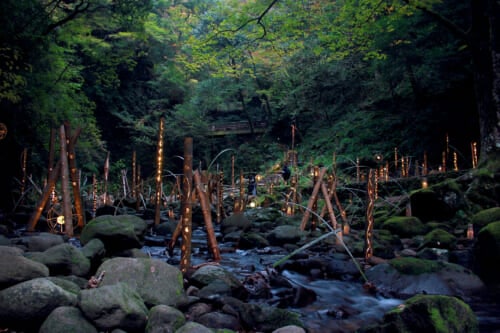
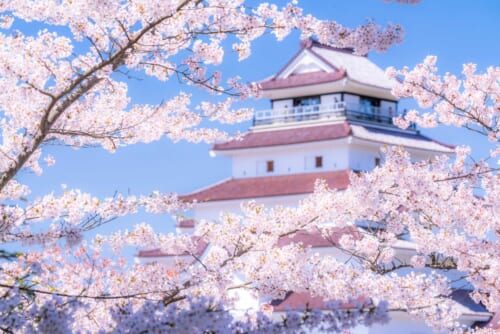
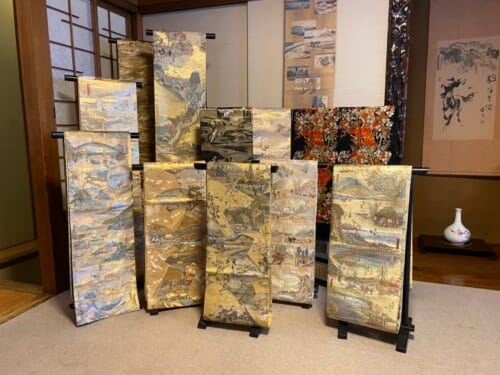
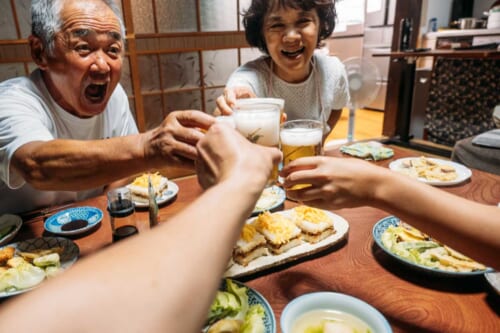
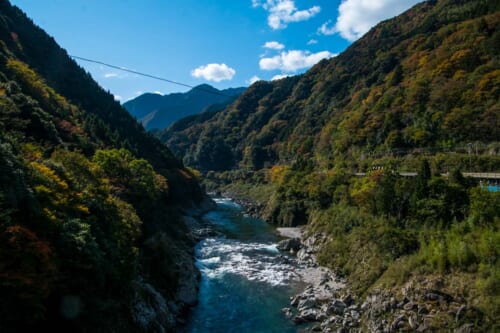



No Comments yet!